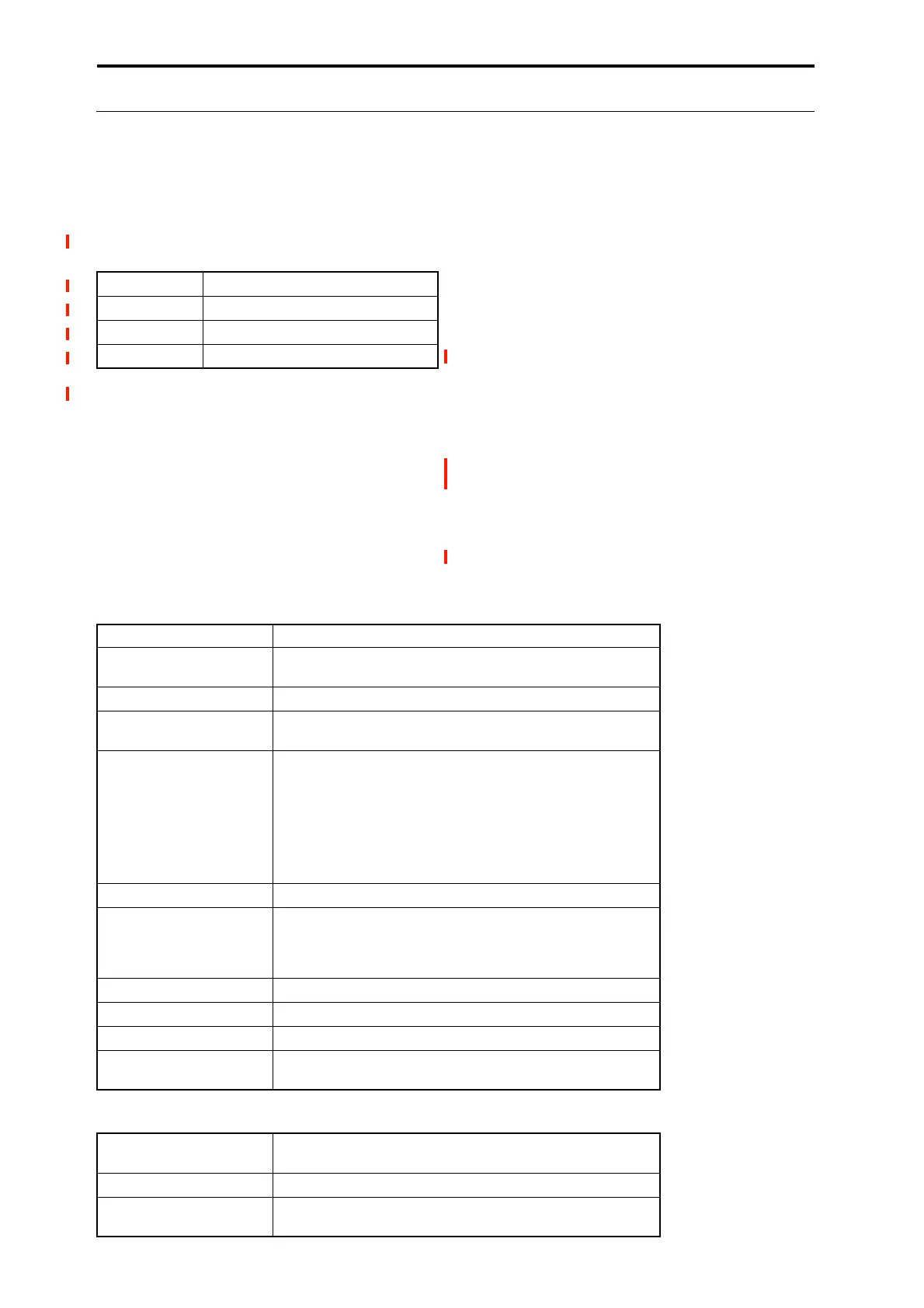Appendices
924
Parameters controlled by MIDI CCs #70-79
MIDI CCs#70–79 have fixed assignments to control basic
Program parameters, for quick and simple control of timbre.
You can use these CCs from MIDI, or from the front-panel
controls.
RT control knobs (SOUND) are always assigned to four of
these CCs, as shown below:
RT control knob (USER) can be assigned to various
functions, including any of the CCs#70-79.
The specific parameters controlled by the CCs will vary
depending on the synth algorithm being used, as shown in
the tables below:
• “HD-1” on page 924
• “AL-1 and STR-1” on page 924
• “CX-3” on page 925
• “MS-20EX” on page 925
• “PolysixEX” on page 925
• “MOD-7” on page 925
• “SGX-2” on page 926
• “EP-1” on page 926
These CCs modulate the underlying parameters, instead of
editing them directly. In most cases, a value of 64 (knob
pointing straight up) is equal to the programmed parameter
value; turning the CC down to 0 reduces the parameter to its
minimum value, and turning the CC up to 127 increases the
parameter to its maximum value. In other cases, such as
some EG parameters, the action of the CC may be more
complex.
In PROGRAM mode, these modulated values can be stored
back into the parameters, if desired. Just use the Write
Program menu command, and the modulation will be
converted into the underlying parameter values, over-writing
the previous settings. After doing this, the CCs will be reset
to 64.
In SAMPLING mode, these CCs will modulate their
parameters just as in PROGRAM mode. You can use the
Convert MS to Program menu command to save the
current state as a Program, in which case the modulation will
be converted into the underlying parameter values.
In COMBINATION and SEQUENCER modes, the CCs will
modulate the parameters for all Timbres or Tracks on a given
MIDI channel. However, edits made in this way cannot be
saved back into a Program.
AL-1 and STR-1
CUT/OFF CC#74–Filter Cutoff
RESONANCE CC#71–Filter Resonance
EG INT CC#79–EG Intensity
EG RELEASE CC#72–EG Release Time
CC# Internal parameters controlled by the CC
70 (Sustain level)
Filter EG 1/2 Sustain (see page 71)
Amp EG 1/2 Sustain (see page 79)
71 (Filter resonance) Filter A/B, 1/2 Resonance (see page 64)
72 (Release time)
Filter EG 1/2 Release (see page 71)
Amp EG 1/2 Release (see page 80)
73 (Attack time)
EG Times:
Filter EG 1/2 Attack (see page 71)
Amp EG 1/2 Attack (see page 80)
Amp EG 1/2 Time Modulation: Attack (see page 81)
EG Levels:
Amp EG 1/2 Level Start (see page 79)
Amp EG 1/2 Level Attack (see page 79)
Amp EG 1/2 Level Modulation: Start (see page 81)
74 (Filter cutoff frequency) Filter A/B, 1/2 Frequency (see page 63)
75 (Decay time)
Filter EG 1/2 Decay (see page 71)
Filter EG 1/2 Slope (see page 71)
Amp EG 1/2 Decay (see page 80)
Amp EG 1/2 Slope (see page 80)
76 (LFO1 speed) LFO 1 Frequency (see page 84)
77 (LFO1 Pitch intensity) Pitch LFO1 Intensity (see page 56)
78 (LFO1 delay) LFO 1 Delay (see page 85)
79 (Filter EG intensity)
Filter EG 1/2 Intensity to A (see page 67)
Filter EG 1/2 Intensity to B (see page 67)
70 (Sustain level)
EG 1 (Filter) Sustain (see page 170)
Amp EG Sustain (see page 166)
71 (Filter resonance) Filter A&B Resonance (see page 157)
72 (Release time)
EG 1 (Filter) Release (see page 170)
Amp EG Release (see page 167)
